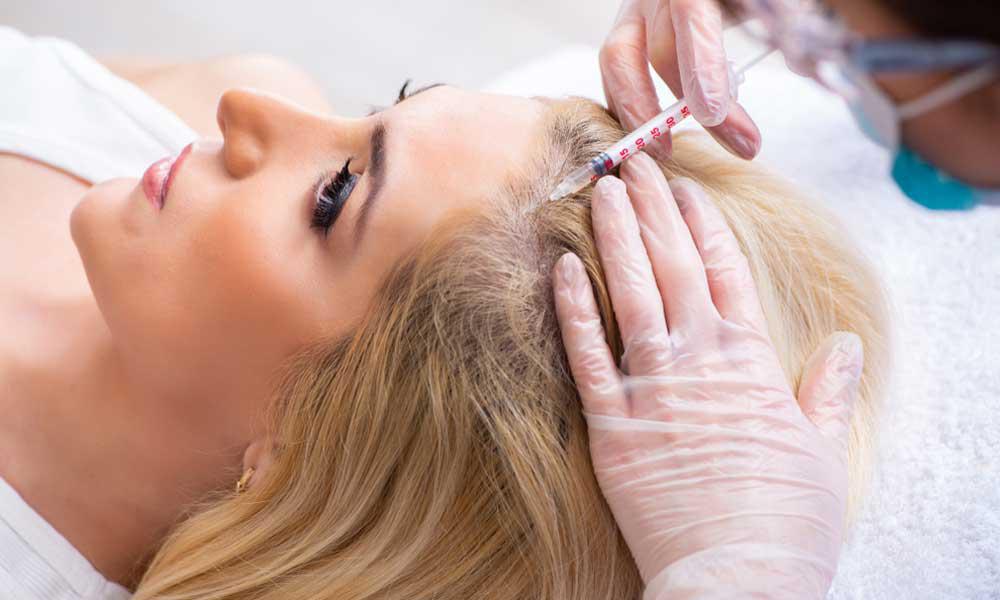The Future Of Hair Loss Treatment: Exploring Advanced Hair Restoration Therapy
Around the world, millions of people experience hair loss due to various reasons.

Around the world, millions of people experience hair loss due to various reasons. It can occur due to genetic factors, hormonal changes, medical conditions, and even stress. While traditional methods such as hair transplant surgery and medication have been successful in treating hair loss to some extent, there is still a need for more advanced and effective solutions.
This article focuses on exploring the future of hair loss treatment through advanced hair restoration therapy. We will delve into the various techniques and technologies being developed to address this issue and the potential they hold for those struggling with hair loss. From stem cell therapy to 3D printing technology, we will discover how these innovative treatments may revolutionize the way we approach hair restoration therapy in the coming years.
Hair Loss Epidemic: The Growing Need for Effective Solutions
Hair loss has become an epidemic in recent times, and it is a growing concern for both men and women. The condition has been attributed to various factors such as genetics, stress, medication and hormonal changes. Studies have shown that up to 50% of men will experience hair loss by the age of 50, while women are not exempted from this phenomenon with more than one-third experiencing hair thinning or baldness.
With the increasing number of people affected by hair loss, there is a growing need for effective solutions to address this problem. Hair restoration therapy is one of the most popular treatments used today to combat hair loss. This technique involves the transplantation of healthy follicles from one part of the scalp to areas that have experienced hair thinning or baldness. The procedure has proven successful in restoring natural-looking hair growth and boosting self-esteem among those who have undergone it.
The Science Behind Hair Loss: Causes and Factors
Both men and women suffer from hair loss. There are several causes of hair loss, including genetics, hormonal imbalance, nutritional deficiencies, stress, and certain medical conditions. While some factors causing hair loss are beyond our control, there are several ways to prevent or treat hair loss.
Hair restoration therapy is one such treatment that has gained popularity in recent years. This therapy involves the use of various techniques to stimulate hair growth and restore volume to thinning or balding areas. One of the most popular methods is follicular unit extraction (FUE), which involves extracting individual hair follicles from a donor site and transplanting them onto the balding area. Another method called platelet-rich plasma (PRP) therapy uses a patient's own blood to encourage hair growth by injecting it into the scalp.
Hair Loss Types: From Male Pattern Baldness to Alopecia Areata
Millions of people around the world suffer from hair loss. While it is often associated with aging, hair loss can also be caused by a variety of factors, including genetics, illness, medications, and stress. There are several different types of hair loss that men and women may experience throughout their lifetime.
Male pattern baldness is the most common type of hair loss in men, affecting approximately 50% of men over the age of 50. This condition is characterized by a receding hairline and thinning hair on the top and crown of the head. Female pattern baldness can also occur in women, but it tends to cause more diffuse thinning throughout the scalp rather than a receding hairline.
Alopecia areata is another form of hair loss that occurs when the body's immune system attacks its own hair follicles.
Surgical Interventions: Hair Transplants and their Challenges
The loss of hair is a very common problem that affects millions of people worldwide, no matter what their age or gender is. While there are various hair restoration therapies available in the market, surgical interventions such as hair transplants have gained immense popularity in recent times due to their long-lasting results. However, several challenges come with these procedures that need to be considered before opting for them.
One of the primary challenges of hair transplant surgery is finding an experienced and skilled surgeon who can deliver successful results. A poorly executed procedure can lead to complications such as scarring, infection, or even further hair loss. Additionally, the success rate of the transplant depends on various factors such as the patient's age, type and stage of hair loss, and overall health condition.
Another challenge associated with surgical interventions like hair transplants is cost-effectiveness. These procedures can be expensive and may not be suitable for everyone's budget.
Platelet-Rich Plasma (PRP): Stimulating Hair Growth Naturally
Platelet-Rich Plasma (PRP) therapy is an innovative hair restoration therapy that has shown promising results in stimulating natural hair growth. PRP is a non-surgical procedure that involves extracting the patient’s own blood, processing it, and then injecting the plasma-rich platelets back into the scalp. This process helps to increase blood flow to the hair follicles and activate dormant or weakened follicles, leading to new hair growth. PRP works by naturally stimulating cell regeneration and promoting collagen production.
This method of hair restoration therapy has become increasingly popular worldwide due to its safety profile and effectiveness in both men and women. Several studies have confirmed significant improvements in patients’ hair density, thickness, and overall quality after undergoing PRP treatments. The benefits of this treatment also extend beyond aesthetics as it can help individuals regain their confidence and self-esteem while improving their mental health status.
Conclusion
In conclusion, Platelet-Rich Plasma (PRP) therapy is a safe and effective method for stimulating hair growth naturally. It has shown promising results in treating hair loss, alopecia, and other types of hair thinning. PRP promotes the growth of new hair follicles, strengthens existing ones, and improves overall hair quality. As a non-invasive treatment with minimal side effects, it is becoming an increasingly popular alternative to traditional methods like hair transplants or medication. If you are experiencing hair loss or thinning, consider exploring PRP as a natural option for regaining your confidence and restoring your locks.


